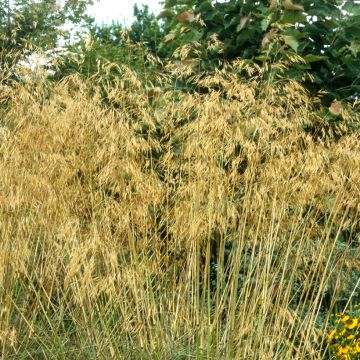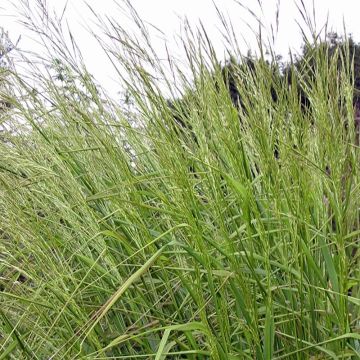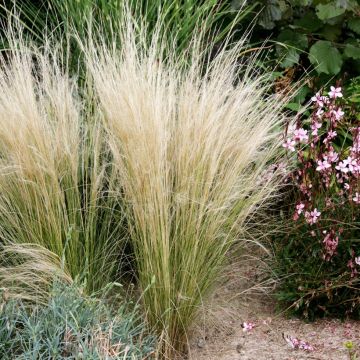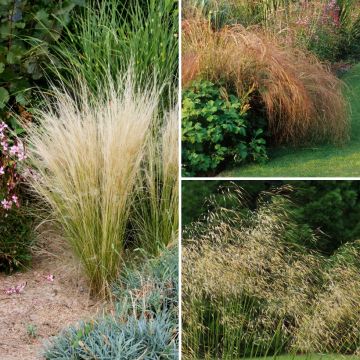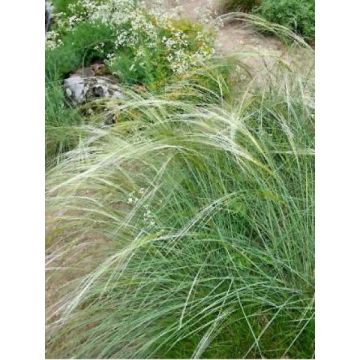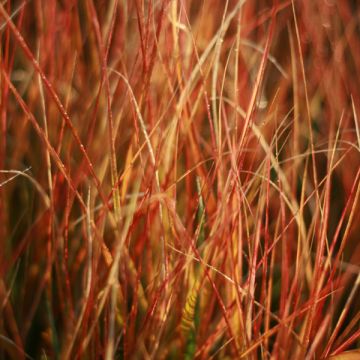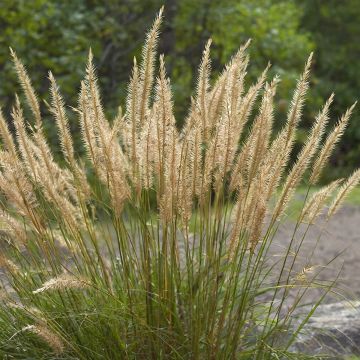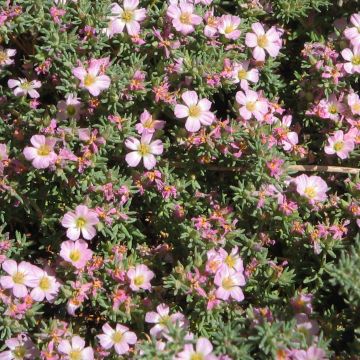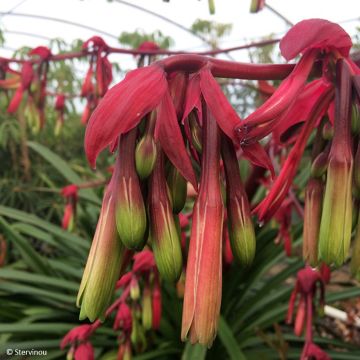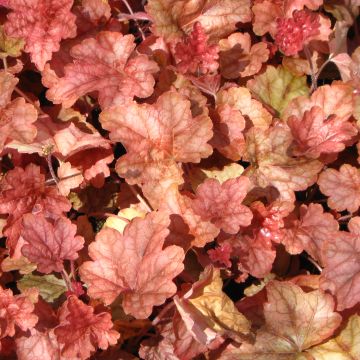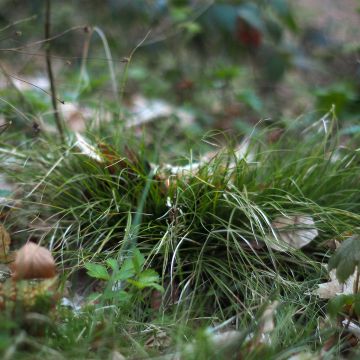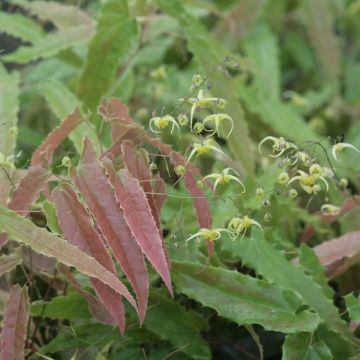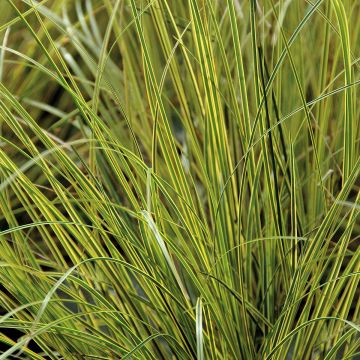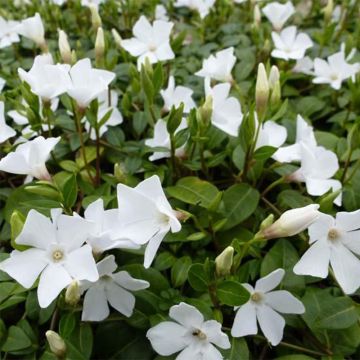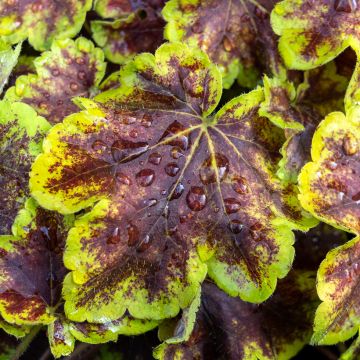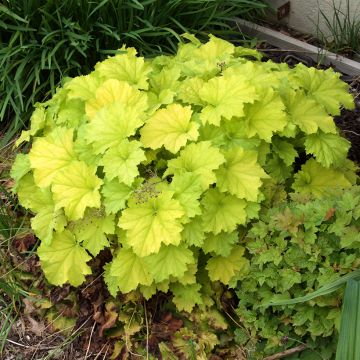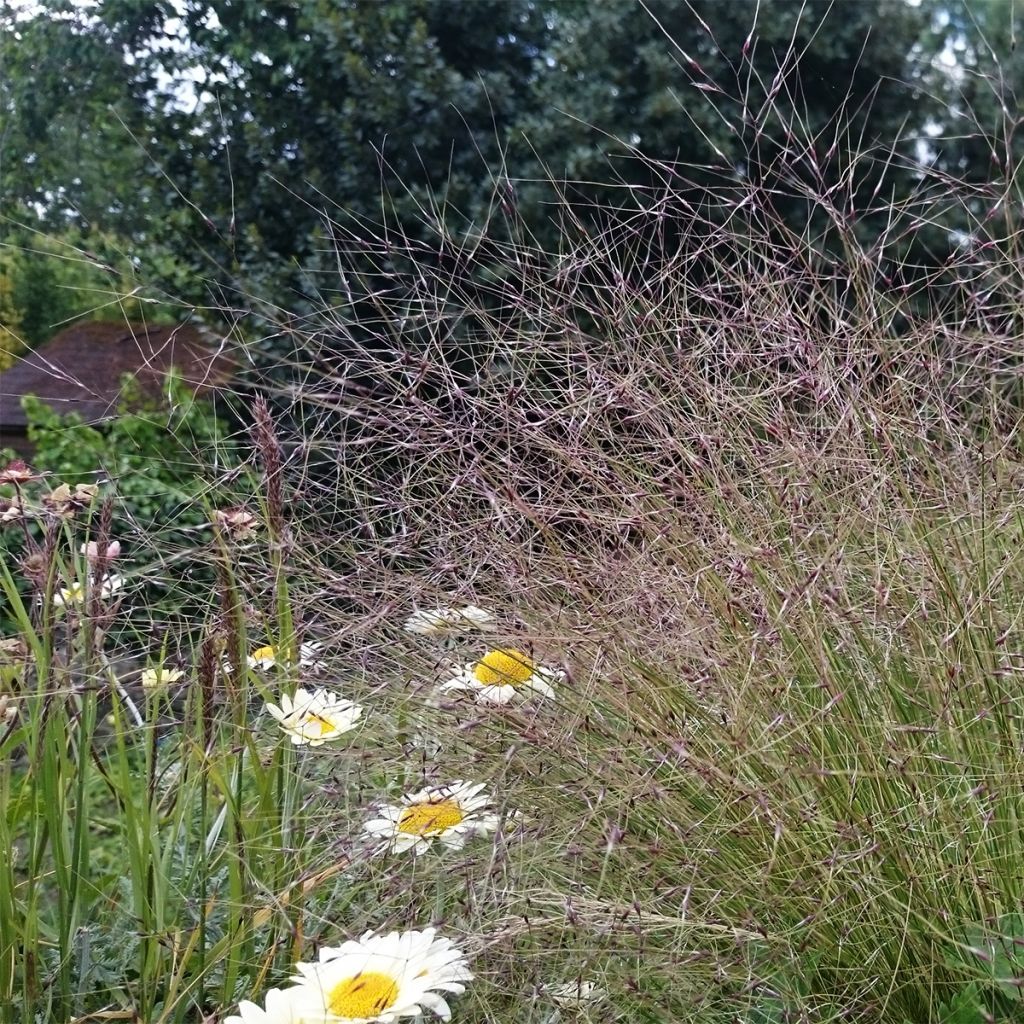

Stipa trichotoma Palomino - Stipe à feuilles dentées
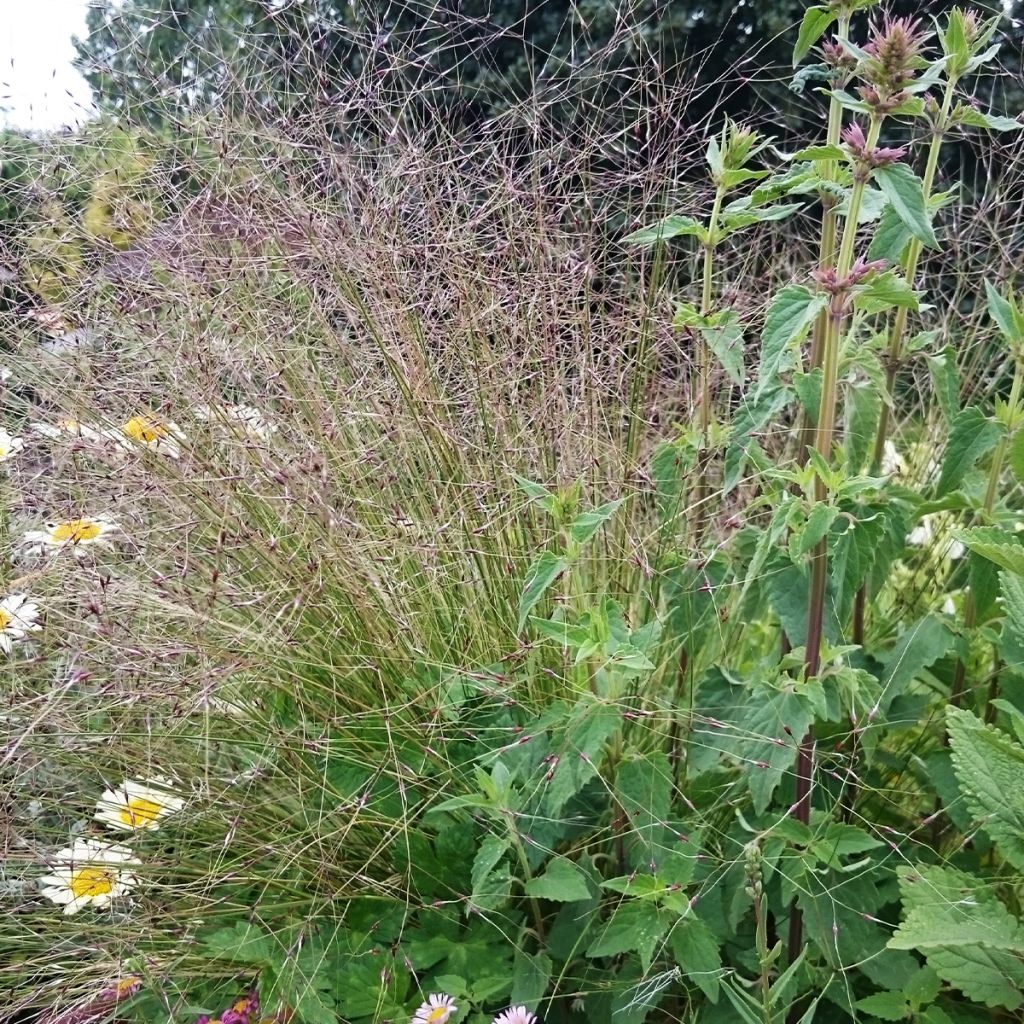

Stipa trichotoma Palomino - Stipe à feuilles dentées
Stipa trichotoma Palomino
Stipa trichotoma Palomino
Serrated tussock Grass
This item cannot be shipped to the selected country
Delivery charge from €5.90
More information
Schedule delivery date,
and select date in basket
This plant carries a 12 months recovery warranty
More information
We guarantee the quality of our plants for a full growing cycle, and will replace at our expense any plant that fails to recover under normal climatic and planting conditions.
From €5.90 for pickup delivery and €6.90 for home delivery
Express home delivery from €8.90.
Does this plant fit my garden?
Set up your Plantfit profile →
Description
Stipa trichotoma Palomino, also known as the Dentate Leaf Stipa, is a small perennial grass that closely resembles the angel hair Stipa and is used in the same way, to bring lightness to flower beds or flowering pots. The plant forms a small, dense, and flexible tuft of very fine, evergreen green foliage topped with abundant silvery and silky flowers in summer. It is hardy and drought-resistant, superb in a wild, romantic, or contemporary garden. It self-seeds in light soil.
Stipa (synonym Nassella) trichotoma Palomino is a horticultural variety. It is a herbaceous perennial plant belonging to the poaceae family, like many grasses. South America is the birthplace of this botanical species. In the wild, this Stipa primarily propagates through seed. It has spread to several regions with a warm temperate climate in the southern hemisphere. 'Palomino' is a clump-forming plant, so it does not spread. It grows in a small tuft of very fine cylindrical, bright green, evergreen leaves, with finely toothed edges, tapering to a fountain shape. When mature, it will measure 40 to 50 cm (16 to 20in) high and about 30 cm (12in) wide. In June-July, pale green, silky inflorescences appear, turning silver then bronze in autumn, forming a ball-like shape around the foliage. The seeds form in late summer on the inflorescences and cluster together in the plant, forming a rough mass like a handful of tow (Stipa comes from the Greek word stipê, which means tow). They are dispersed by the wind, ensuring the species' survival.
Stipa trichotoma Palomino is hardy down to -15°C in well-drained soil, a perfect plant for dry gardens even in very dry climates. This grass is appreciated for the extreme softness of its silky tufts and because it is decorative for a good part of the year. It accompanies light, flowering perennials, such as linarias, penstemons, Buenos Aires verbenas, Asters cordifolius, scabious, and annual poppies and Damask nigellas. Dark foliage will enhance its silvery plumes. Plant it in a place where you can touch it! Along a pathway or terrace, or in a large pot.
Report an error about the product description
Flowering
Foliage
Plant habit
Botanical data
Stipa
trichotoma
Palomino
Poaceae
Serrated tussock Grass
South America
Other Stipa
Planting and care
Prepare a planting hole of 30 cm (12in) x 30 cm (12in) x 30 cm (12in). Choose a very sunny location in well-drained soil or a raised bed. If your soil is heavy, mix in some gravel and compost. Partially fill the hole and place your young plant so that the top of the root ball is covered with 3 cm (1in) of soil. Firm the soil and water generously to eliminate air pockets. If the weather is dry, you will need to water regularly for a few weeks to help your plant establish. Stipa grasses remain decorative all year round, but they renew their foliage in spring, so we recommend combing your plants in late winter to remove dead leaves.
Planting period
Intended location
Care
This item has not been reviewed yet - be the first to leave a review about it.
Evergreen perennials
Haven't found what you were looking for?
Hardiness is the lowest winter temperature a plant can endure without suffering serious damage or even dying. However, hardiness is affected by location (a sheltered area, such as a patio), protection (winter cover) and soil type (hardiness is improved by well-drained soil).

Photo Sharing Terms & Conditions
In order to encourage gardeners to interact and share their experiences, Promesse de fleurs offers various media enabling content to be uploaded onto its Site - in particular via the ‘Photo sharing’ module.
The User agrees to refrain from:
- Posting any content that is illegal, prejudicial, insulting, racist, inciteful to hatred, revisionist, contrary to public decency, that infringes on privacy or on the privacy rights of third parties, in particular the publicity rights of persons and goods, intellectual property rights, or the right to privacy.
- Submitting content on behalf of a third party;
- Impersonate the identity of a third party and/or publish any personal information about a third party;
In general, the User undertakes to refrain from any unethical behaviour.
All Content (in particular text, comments, files, images, photos, videos, creative works, etc.), which may be subject to property or intellectual property rights, image or other private rights, shall remain the property of the User, subject to the limited rights granted by the terms of the licence granted by Promesse de fleurs as stated below. Users are at liberty to publish or not to publish such Content on the Site, notably via the ‘Photo Sharing’ facility, and accept that this Content shall be made public and freely accessible, notably on the Internet.
Users further acknowledge, undertake to have ,and guarantee that they hold all necessary rights and permissions to publish such material on the Site, in particular with regard to the legislation in force pertaining to any privacy, property, intellectual property, image, or contractual rights, or rights of any other nature. By publishing such Content on the Site, Users acknowledge accepting full liability as publishers of the Content within the meaning of the law, and grant Promesse de fleurs, free of charge, an inclusive, worldwide licence for the said Content for the entire duration of its publication, including all reproduction, representation, up/downloading, displaying, performing, transmission, and storage rights.
Users also grant permission for their name to be linked to the Content and accept that this link may not always be made available.
By engaging in posting material, Users consent to their Content becoming automatically accessible on the Internet, in particular on other sites and/or blogs and/or web pages of the Promesse de fleurs site, including in particular social pages and the Promesse de fleurs catalogue.
Users may secure the removal of entrusted content free of charge by issuing a simple request via our contact form.
The flowering period indicated on our website applies to countries and regions located in USDA zone 8 (France, the United Kingdom, Ireland, the Netherlands, etc.)
It will vary according to where you live:
- In zones 9 to 10 (Italy, Spain, Greece, etc.), flowering will occur about 2 to 4 weeks earlier.
- In zones 6 to 7 (Germany, Poland, Slovenia, and lower mountainous regions), flowering will be delayed by 2 to 3 weeks.
- In zone 5 (Central Europe, Scandinavia), blooming will be delayed by 3 to 5 weeks.
In temperate climates, pruning of spring-flowering shrubs (forsythia, spireas, etc.) should be done just after flowering.
Pruning of summer-flowering shrubs (Indian Lilac, Perovskia, etc.) can be done in winter or spring.
In cold regions as well as with frost-sensitive plants, avoid pruning too early when severe frosts may still occur.
The planting period indicated on our website applies to countries and regions located in USDA zone 8 (France, United Kingdom, Ireland, Netherlands).
It will vary according to where you live:
- In Mediterranean zones (Marseille, Madrid, Milan, etc.), autumn and winter are the best planting periods.
- In continental zones (Strasbourg, Munich, Vienna, etc.), delay planting by 2 to 3 weeks in spring and bring it forward by 2 to 4 weeks in autumn.
- In mountainous regions (the Alps, Pyrenees, Carpathians, etc.), it is best to plant in late spring (May-June) or late summer (August-September).
The harvesting period indicated on our website applies to countries and regions in USDA zone 8 (France, England, Ireland, the Netherlands).
In colder areas (Scandinavia, Poland, Austria...) fruit and vegetable harvests are likely to be delayed by 3-4 weeks.
In warmer areas (Italy, Spain, Greece, etc.), harvesting will probably take place earlier, depending on weather conditions.
The sowing periods indicated on our website apply to countries and regions within USDA Zone 8 (France, UK, Ireland, Netherlands).
In colder areas (Scandinavia, Poland, Austria...), delay any outdoor sowing by 3-4 weeks, or sow under glass.
In warmer climes (Italy, Spain, Greece, etc.), bring outdoor sowing forward by a few weeks.

































